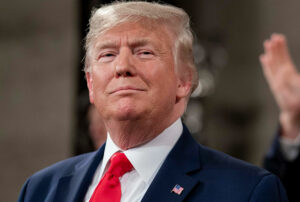PEZA expecting Philippines to escape worst of Trump tariffs

THE Philippine Economic Zone Authority (PEZA) said the Philippines may avoid the worst of the Trump tariffs because of its small trade surplus with the US as well as its key role in US regional strategy.
“Being an important country in the geopolitical strategy of the US, I believe that we will be less impacted by the tariffs that have been announced so far,” PEZA Director General Tereso O. Panga told BusinessWorld.
US President Donald Trump last week announced plans to impose tariffs on auto, chip, and pharmaceutical imports over the course of the year.
In particular, Mr. Trump said that he will impose 25% tariffs on automobiles by April 2, with 25% or higher tariffs expected for pharmaceuticals and semiconductors.
“Opportunities will arise where manufacturers in the countries greatly affected by the US tariffs might opt to transfer to the Philippines and locate in PEZA. This is an upside that I am looking at as an advantage for the country due to the US tariff pronouncements,” he said.
“Again, however, it is still opaque as to how much the tariffs will impact the Philippines, and I am quite sure that talks are under way to minimize the impact on the Philippines-US trade,” he added.
Mr. Panga said the Philippine motor vehicle and pharmaceutical industries will not be affected by the tariffs.
“The Philippines is more of an importer of vehicles and a producer for the local market. So, this industry is basically unaffected by the Trump tariffs as we do not export cars to the US,” he said.
“The automobile industry consists of two sectors: motor vehicle assembly and vehicle parts and components manufacturing,” he added.
He said that the Philippines is still in the “developing stage” in terms of setting up pharmaceutical economic zones.
“The primary objective of this is a direct instruction from the President to enable the Philippines to first have a stronger pharmaceutical manufacturing footprint and to lessen the price for the domestic market and increase our citizens’ access to affordable medicines,” he said.
“In effect, the Trump tariff will not impact our pharma industry,” he added.
However, he said that the Philippines’ largest exports are semiconductors, though it remains one of the smaller players in the region in terms of electronics exports to the US.
“Further, there are US policies like the Chips Act where the Philippines has been promised support by the US. These agreements and commitments are still in play and may lessen the impact of Trump 2.0 tariffs on this industry,” he said.
Citing a report by ING, he said that “India and the Philippines are less at risk because these economies are domestically demand-driven and export fewer sophisticated goods that compete directly with the US.”
He said that PEZA will nevertheless be watching US trade policy closely.
“Higher authorities are in negotiations to soften the blow of these tariffs on the Philippines and PEZA locators. I am quite sure that this will be discussed in the Trade and Investment Framework Agreement consultations between the Philippines and US,” he said.
“Currently, we are least exposed in terms of bilateral trade imbalances with the US as well as its effect on our gross domestic product,” he added, citing the ING report. —
He said that most of the companies in the Philippines that produce semiconductors are part of a global supply chain supplying Japan, China, South Korea, the US, and ASEAN.
“In 2023, semiconductors and integrated circuits represented 23.3% of our exports to the US,” he added.
Asked to comment, Ateneo School of Government Dean and Economics Professor Philip Arnold P. Tuaño said that the Philippines will also benefit from tariffs imposed on other countries.
“The country may want to establish itself as a key market for inputs into the electronics industry and push US companies to buy more locally made products in order to avoid higher-cost goods from the European Union, China, Mexico and Canada,” he said via e-mail.
“The country is also trying to establish itself as an automotive parts hub in the region and therefore could also market to US car manufacturers the quality of labor and low cost compared to manufacturers in its domestic market,” he added.
The Philippine Statistics Authority reported that the US was the top export destination last year, accounting for $12.12 billion or 16.6% of all exports. — Justine Irish D. Tabile




